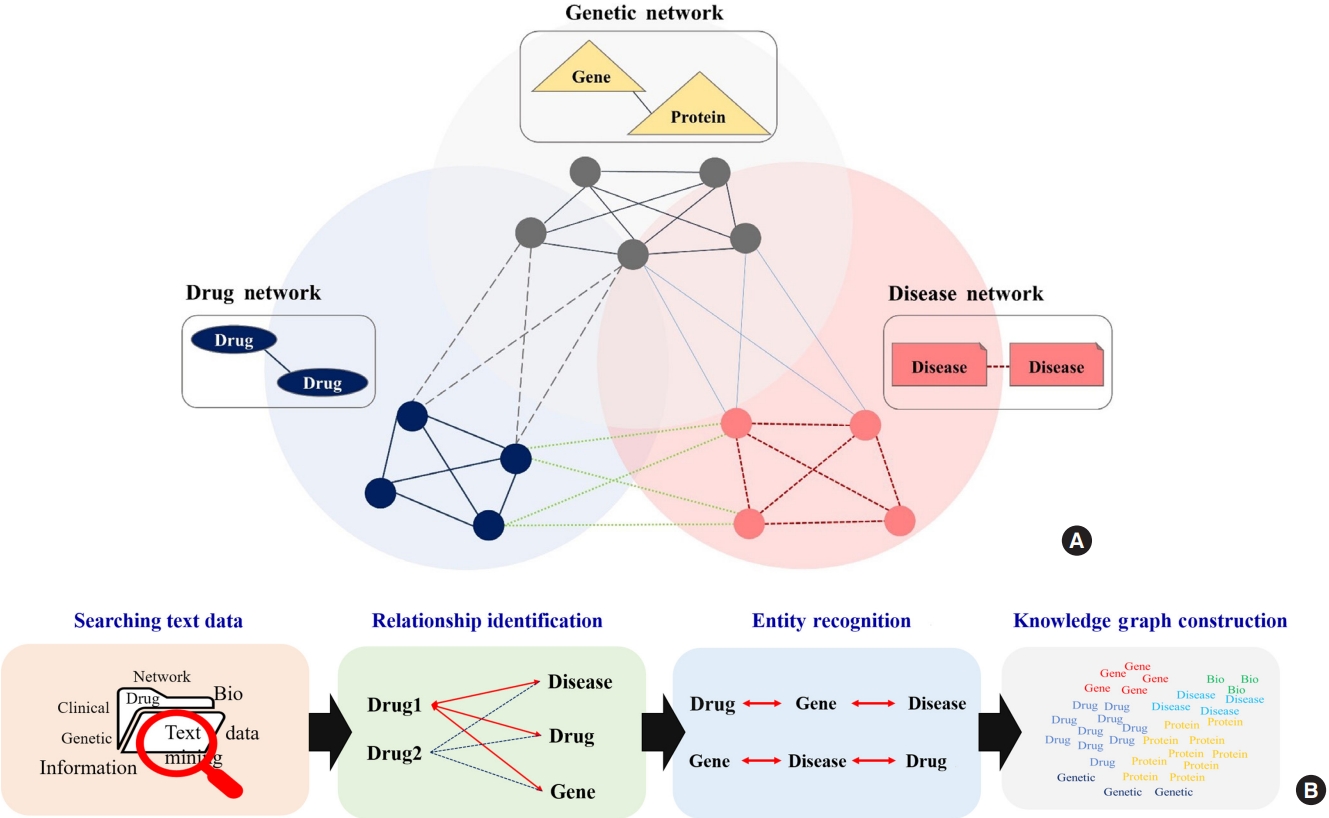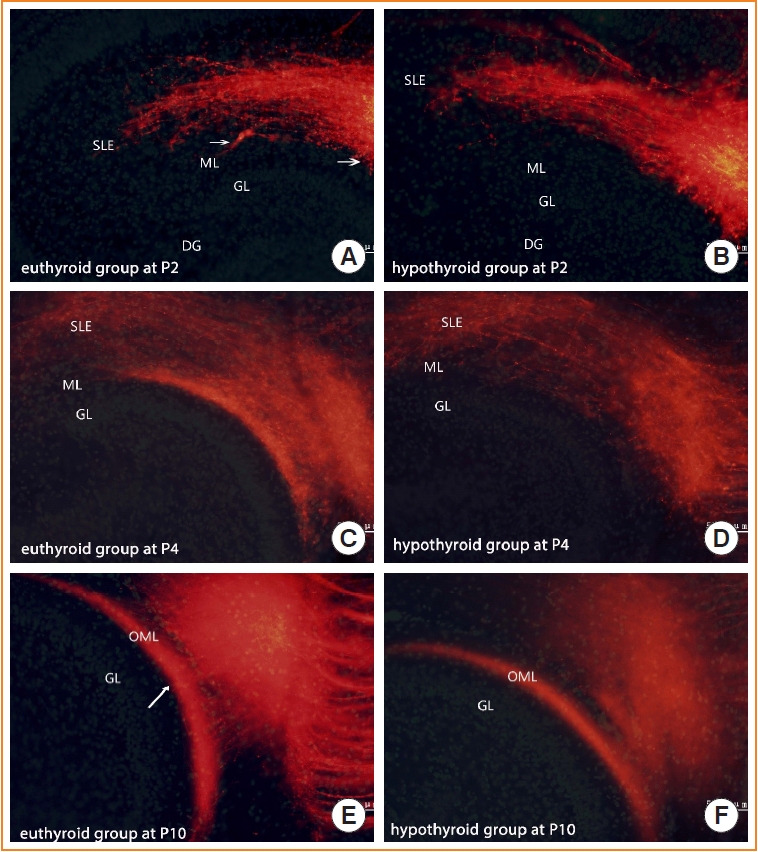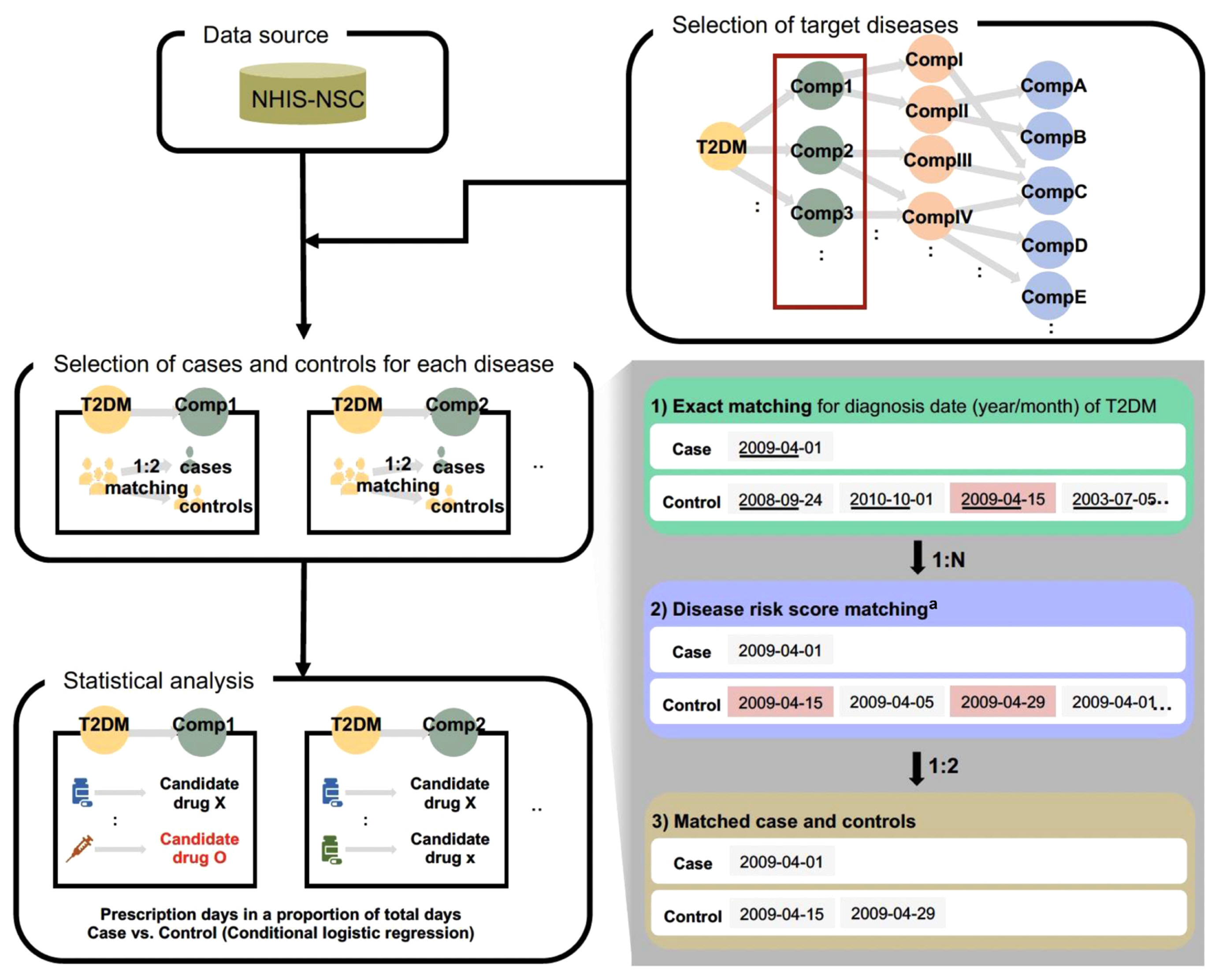Most cited
- Page Path
- HOME > BROWSE ARTICLES > Most cited
From articles published in Endocrinology and Metabolism during the past two years (2022 ~ ).
Editorial
- Thyroid
- Effect of Hyperthyroidism on Preventing Renal Insufficiency
- Tae Yong Kim
- Endocrinol Metab. 2022;37(2):220. Published online April 25, 2022
- DOI: https://doi.org/10.3803/EnM.2022.201
- 2,155 View
- 91 Download
- 1 Crossref

Review Article
- Diabetes, Obesity and Metabolism
- A Study on Methodologies of Drug Repositioning Using Biomedical Big Data: A Focus on Diabetes Mellitus
- Suehyun Lee, Seongwoo Jeon, Hun-Sung Kim
- Endocrinol Metab. 2022;37(2):195-207. Published online April 13, 2022
- DOI: https://doi.org/10.3803/EnM.2022.1404

- 5,494 View
- 199 Download
- 1 Web of Science
- 1 Crossref
-
 Abstract
Abstract
 PDF
PDF Supplementary Material
Supplementary Material PubReader
PubReader  ePub
ePub - Drug repositioning is a strategy for identifying new applications of an existing drug that has been previously proven to be safe. Based on several examples of drug repositioning, we aimed to determine the methodologies and relevant steps associated with drug repositioning that should be pursued in the future. Reports on drug repositioning, retrieved from PubMed from January 2011 to December 2020, were classified based on an analysis of the methodology and reviewed by experts. Among various drug repositioning methods, the network-based approach was the most common (38.0%, 186/490 cases), followed by machine learning/deep learningbased (34.3%, 168/490 cases), text mining-based (7.1%, 35/490 cases), semantic-based (5.3%, 26/490 cases), and others (15.3%, 75/490 cases). Although drug repositioning offers several advantages, its implementation is curtailed by the need for prior, conclusive clinical proof. This approach requires the construction of various databases, and a deep understanding of the process underlying repositioning is quintessential. An in-depth understanding of drug repositioning could reduce the time, cost, and risks inherent to early drug development, providing reliable scientific evidence. Furthermore, regarding patient safety, drug repurposing might allow the discovery of new relationships between drugs and diseases.
-
Citations
Citations to this article as recorded by- The Present and Future of Artificial Intelligence-Based Medical Image in Diabetes Mellitus: Focus on Analytical Methods and Limitations of Clinical Use
Ji-Won Chun, Hun-Sung Kim
Journal of Korean Medical Science.2023;[Epub] CrossRef
- The Present and Future of Artificial Intelligence-Based Medical Image in Diabetes Mellitus: Focus on Analytical Methods and Limitations of Clinical Use

Original Article
- Thyroid
- Developmental Hypothyroidism Influences the Development of the Entorhinal-Dentate Gyrus Pathway of Rat Offspring
- Ting Jin, Ranran Wang, Shiqiao Peng, Xin Liu, Hanyi Zhang, Xue He, Weiping Teng, Xiaochun Teng
- Endocrinol Metab. 2022;37(2):290-302. Published online April 8, 2022
- DOI: https://doi.org/10.3803/EnM.2021.1343

- 3,124 View
- 96 Download
- 1 Web of Science
- 1 Crossref
-
 Abstract
Abstract
 PDF
PDF Supplementary Material
Supplementary Material PubReader
PubReader  ePub
ePub - Background
Developmental hypothyroidism impairs learning and memory in offspring, which depend on extensive neuronal circuits in the entorhinal cortex, together with the hippocampus and neocortex. The entorhinal-dentate gyrus pathway is the main entrance of memory circuits. We investigated whether developmental hypothyroidism impaired the morphological development of the entorhinal-dentate gyrus pathway.
Methods
We examined the structure and function of the entorhinal-dentate gyrus pathway in response to developmental hypothyroidism induced using 2-mercapto-1-methylimidazole.
Results
1,1´-Dioctadecyl-3,3,3´,3´-tetramethylindocarbocyanine perchlorate tract tracing indicated that entorhinal axons showed delayed growth in reaching the outer molecular layer of the dentate gyrus at postnatal days 2 and 4 in hypothyroid conditions. The proportion of fibers in the outer molecular layer was significantly smaller in the hypothyroid group than in the euthyroid group at postnatal day 4. At postnatal day 10, the pathway showed a layer-specific distribution in the outer molecular layer, similar to the euthyroid group. However, the projected area of entorhinal axons was smaller in the hypothyroid group than in the euthyroid group. An electrophysiological examination showed that hypothyroidism impaired the long-term potentiation of the perforant and the cornu ammonis 3–cornu ammonis 1 pathways. Many repulsive axon guidance molecules were involved in the formation of the entorhinaldentate gyrus pathway. The hypothyroid group had higher levels of erythropoietin-producing hepatocyte ligand A3 and semaphorin 3A than the euthyroid group.
Conclusion
We demonstrated that developmental hypothyroidism might influence the development of the entorhinal-dentate gyrus pathway, contributing to impaired long-term potentiation. These findings improve our understanding of neural mechanisms for memory function. -
Citations
Citations to this article as recorded by- Semaphorin 3A Increases in the Plasma of Women with Diminished Ovarian Reserve Who Respond Better to Controlled Ovarian Stimulation
Michela Palese, Gabriella Ferretti, Giuseppe Perruolo, Sara Serafini, Rossana Sirabella, Vincenzo Marrone, Martina De Rosa, Laura Sarno, Ida Strina, Carmela Matrone, Maurizio Guida
Life.2024; 14(3): 358. CrossRef
- Semaphorin 3A Increases in the Plasma of Women with Diminished Ovarian Reserve Who Respond Better to Controlled Ovarian Stimulation

Corrigenda
- Miscellaneous
- Corrigendum: Correction of Acknowledgments. Protocol for a Korean Multicenter Prospective Cohort Study of Active Surveillance or Surgery (KoMPASS) in Papillary Thyroid Microcarcinoma
- Min Ji Jeon, Yea Eun Kang, Jae Hoon Moon, Dong Jun Lim, Chang Yoon Lee, Yong Sang Lee, Sun Wook Kim, Min-Hee Kim, Bo Hyun Kim, Ho-Cheol Kang, Minho Shong, Sun Wook Cho, Won Bae Kim
- Endocrinol Metab. 2022;37(1):181-182. Published online February 28, 2022
- DOI: https://doi.org/10.3803/EnM.2022.104
- Corrects: Endocrinol Metab 2021;36(2):359
- 2,785 View
- 108 Download
- 1 Web of Science
- 1 Crossref
-
 PDF
PDF PubReader
PubReader  ePub
ePub -
Citations
Citations to this article as recorded by- Risk of thyroid cancer associated with glucagon‐like peptide‐1 receptor agonists and dipeptidyl peptidase‐4 inhibitors in patients with type 2 diabetes: A population‐based cohort study
Sungho Bea, Heejun Son, Jae Hyun Bae, Sun Wook Cho, Ju‐Young Shin, Young Min Cho
Diabetes, Obesity and Metabolism.2024; 26(1): 108. CrossRef
- Risk of thyroid cancer associated with glucagon‐like peptide‐1 receptor agonists and dipeptidyl peptidase‐4 inhibitors in patients with type 2 diabetes: A population‐based cohort study

- Miscellaneous
- Corrigendum: Correction of Acknowledgments. Active Surveillance as an Effective Management Option for Low-Risk Papillary Thyroid Microcarcinoma
- Min Ji Jeon, Won Gu Kim, Tae Yong Kim, Young Kee Shong, Won Bae Kim
- Endocrinol Metab. 2022;37(1):180. Published online February 28, 2022
- DOI: https://doi.org/10.3803/EnM.2022.103
- Corrects: Endocrinol Metab 2021;36(4):717
- 2,557 View
- 105 Download
- 1 Web of Science
- 1 Crossref
-
 PDF
PDF PubReader
PubReader  ePub
ePub -
Citations
Citations to this article as recorded by- Lateral Involvement in Different Sized Papillary Thyroid Carcinomas Patients with Central Lymph Node Metastasis: A Multi-Center Analysis
Yu Heng, Zheyu Yang, Pengyu Cao, Xi Cheng, Lei Tao
Journal of Clinical Medicine.2022; 11(17): 4975. CrossRef
- Lateral Involvement in Different Sized Papillary Thyroid Carcinomas Patients with Central Lymph Node Metastasis: A Multi-Center Analysis

Original Article
- Diabetes, Obesity and Metabolism
Big Data Articles (National Health Insurance Service Database) - Drug Repositioning Using Temporal Trajectories of Accompanying Comorbidities in Diabetes Mellitus
- Namgi Park, Ja Young Jeon, Eugene Jeong, Soyeon Kim, Dukyong Yoon
- Endocrinol Metab. 2022;37(1):65-73. Published online February 8, 2022
- DOI: https://doi.org/10.3803/EnM.2021.1275

- 3,724 View
- 163 Download
- 2 Web of Science
- 1 Crossref
-
 Abstract
Abstract
 PDF
PDF Supplementary Material
Supplementary Material PubReader
PubReader  ePub
ePub - Background
Most studies of systematic drug repositioning have used drug-oriented data such as chemical structures, gene expression patterns, and adverse effect profiles. As it is often difficult to prove repositioning candidates’ effectiveness in real-world clinical settings, we used patient-centered real-world data for screening repositioning candidate drugs for multiple diseases simultaneously, especially for diabetic complications.
Methods
Using the National Health Insurance Service-National Sample Cohort (2002 to 2013), we analyzed claims data of 43,048 patients with type 2 diabetes mellitus (age ≥40 years). To find repositioning candidate disease-drug pairs, a nested case-control study was used for 29 pairs of diabetic complications and the drugs that met our criteria. To validate this study design, we conducted an external validation for a selected candidate pair using electronic health records.
Results
We found 24 repositioning candidate disease-drug pairs. In the external validation study for the candidate pair cerebral infarction and glycopyrrolate, we found that glycopyrrolate was associated with decreased risk of cerebral infarction (hazard ratio, 0.10; 95% confidence interval, 0.02 to 0.44).
Conclusion
To reduce risks of diabetic complications, it would be possible to consider these candidate drugs instead of other drugs, given the same indications. Moreover, this methodology could be applied to diseases other than diabetes to discover their repositioning candidates, thereby offering a new approach to drug repositioning. -
Citations
Citations to this article as recorded by- Drug Repositioning: Exploring New Indications for Existing Drug-Disease Relationships
Hun-Sung Kim
Endocrinology and Metabolism.2022; 37(1): 62. CrossRef
- Drug Repositioning: Exploring New Indications for Existing Drug-Disease Relationships


 KES
KES

 First
First Prev
Prev



